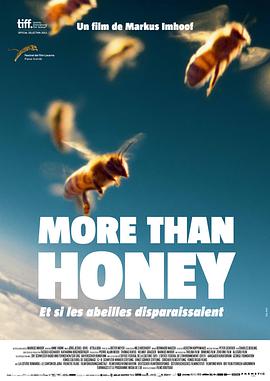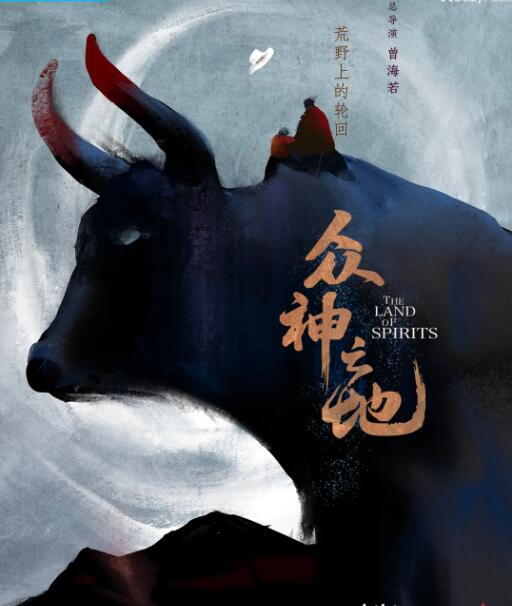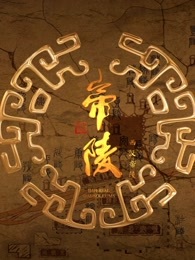@《采得百花成蜜后》相关热播
@最近更新纪录片
@《采得百花成蜜后》相关影评
By Michael Joshin Thiele
When we enter the life of honeybees, we venture into a multidimensional landscape of being. Their 'ecology of selves' is as rich and all-pervading as it is intimately connected with the entire biosphere and our cultural life-sphere. As we know, their survival and well-being is critical for that of our own. From this realization emerges an intimacy which can be a guiding principle for our relationships with bees and a resource for our quest to find ways to provide for them on our farms, within our landscapes, and our local watersheds. The current zeitgeist seems to lead us naturally to inquire how we can create a holistic framework and engage with honeybees in a truly bee-centric fashion?
What kind of phenomenon does it represent? The nature of honeybees – which I would like to refer to from here on as the onebeeing – is complex, fluid and appears to integrate polar opposite qualities. The surprising mammalian-like qualities in an insect body, and the singularity of the macro-organism, which consists out of thousands of individuals, are examples of the multidimensionality of its being. The onebeeing is a vastly dynamic life form, exhibiting a breathtaking degree of plasticity and flexibility. Its own tissue consists of thousands of individual bees, who are the medium for countless physiological processes ranging from metabolism, gestation, sense perception, and neurological processing. What is unique is that the onebeeing functions as if it were undifferentiated tissue. No specific organ seems to appear, and yet all normal functions of inner organs are present. This tissue acts like stem cell tissue without ever losing a complete open dynamic state of evolving according to current needs. Its receptivity and aliveness towards formative forces and fields in general transforms this tissue-like 'gathering of individuals' into a new dimension of life.
The onebeeing is a network of interrelations. Unlike our own default sense of self, hers is not defined as a living being separate from the world, but rather as being part of the world through intimate belonging. Her sense of self is created in dynamic and multidimensional processes, as if she were embodying a network of multiple selves. We could almost say that she 'are' more other than self. This cornucopia of levels of selves comes with a change in language, as if common grammar was unable to reflect this phenomenon. What follows is a reshaping of our perception and understanding of 'them', and an inward shift of our frame of reference. Our own identity becomes more fluid, more open. Who 'is' we?
The symbiotic and relational quality of the onebeeing is beautifully expressed in the place of home, as the typical nest is located within another being, namely within the womb of a tree. It is a place of physical and emotional warmth, one of inwardness and sensing. It is often to be found high up in trees and therefore suspends the onebeeing between heaven and earth. It does not fully belong to the earth, but rather leans towards her. Hollows in trees have been the natural nesting site of the onebeeing for millions of years. The typical hollow develops over several years, if not decades, in trees in the aftermath of an injury. In the process, microorganisms, insects, and vertebras contribute to the shaping of the final nest hollow. Eventually the offspring of a onebeeing, also known as swarm, will find the hollow and establish a nesting site which can, depending on the tree species, stay viable for centuries. As the hollow transforms into the nest site of the onebeeing, it undergoes several changes. Specific to this new inner environment, over 200 symbiotic insects and around 8,000 microorganisms join the onebeeing and form a new unit of its own kind. This 'ecology of selves' represents the foundation of health, aliveness, happiness, and balance. This kind of nest is the true home of the onebeeing. In utter darkness and within an undisturbed and protected nest, white comb emerges and grows in natural ways, as it can freely follow her instinctual preferences. Comb is never moved, nor are any blue prints or implants, otherwise known as foundation, given. Only in such an environment can the onebeeing unfold her embodiment fully and freely. On a fundamental level, a birth right is granted: the birth right to be fully herself. The question arises how this natural home can become our reference for a holistic paradigm of apiculture? And how can we integrate this rich and complex focal point into our farms and our watersheds?
Earlier this year I went to Flagstaff, AZ to teach a weekend course on the subject. We were a diverse group of apiculturists, gardeners, and educators all united in a gesture of honoring the onebeeing and in finding new reference points for our life with bees. One of our activities was an experiential group exercise of receptive listing, similar to that of systemic constellation work. As a 'gathering of individuals', we not only entered an open ended process of listening and becoming, but we also entered into a field-like medium, a soulful awareness of being alive. This is what we can call 'Apisophia', the wisdom of the onebeeing. It is a wisdom which can be an inspiration in all aspects of our lives and a compass point for times of uncertainty.
Our farms and watersheds are trans-species organisms and diverse ecologies of selves, in which we live and are part of. The unique nature of the onebeeing can be a resource for our navigation through this greater web of life, as it teaches inclusive ways of decision making and promotes an awareness of the entanglements of our lives within the world. The onebeeing points towards an apiculture beyond bees, one that does not begin with a quest for honey, but rather with humility and a sense of prayer. It is concerned with the well-being of the web of life and a renewed human role and identity, one which is shifting away from viewing the world as 'otherness' and moves towards an awareness of being a constituent of a biotic, emotional, and spiritual community.
蜜蜂的生活向我们展示了存在(being)的多维景观。他们的“多自我的生态”(ecology of selves)既丰富又无处不在,因为它与整个生物圈和我们的文化生活圈息息相关。众所周知,他们的生存和幸福对于我们自己的生存和幸福至关重要。
从这种认识中产生了一种亲密关系,它可以成为我们与蜜蜂关系的指导原则,也可以成为我们寻求在我们的农场、在我们的景观范围内以及我们当地的流域(watershed)上为它们提供途径的资源。当前的时代精神(zeitgeist)似乎很自然地引导我们去探究我们如何能够创建一个整体框架,从而以真正以蜜蜂为中心(bee-centric)的方式与蜜蜂接触?
它代表什么样的现象?蜜蜂的本性——我想从此指称它为the onebeeing——是复杂的、流动的,似乎融合了极端(polar)相反的品质。在一只昆虫体内惊人的哺乳动物样的特质,以及由成千上万个个体组成的宏观有机体的奇异性,都是其存在的多维性的例子。The onebeeing是一种极富活力的生命形式,具有惊人的可塑性和灵活性。它的身体组织(tissue)由成千上万只个体蜜蜂组成,它们是无数生理过程的媒介,比如新陈代谢、怀孕、感官感知和神经处理。The onebeeing独特之处在于,其功能好像是未分化的身体组织。似乎没有特定的器官出现,但内脏的所有正常功能都存在。
这种身体组织就像干细胞组织一样,不会失去完全开放的动态状态,根据当前的需要进化。它对一般的形成性的力和形成性的场的可接受性和活性将这种身体组织式的‘个体的聚集’转化为一种新的生命维度。
The onebeeing是相互联系的网络。与我们自己默认的自我(self)不同,她的self不是被定义为与世界分离的有生命的存在,而是通过亲密的归属感成为世界的一部分。她的自我感(sense of self)是在动态和多维的过程中产生的,好像她体现了一个由多个自我组成的网络。我们几乎可以说,她比自我更‘他者’。这种自我层次的夸张伴随着语言的变化,仿佛普通语法无法反映这种现象。随之而来的是我们对"它们"的认知和理解的重塑,以及我们的参照系(frame of reference)的内移。我们自身的身份变得更加流动,更加开放。我们“是”谁?
Inside of beehive in hollow tree:油管BeekeepingVlog
The onebeeing的共生的和关联的品质在家的位置(the place of home)中得到了很好的表达,典型的巢位于另一存在体内,也就是树的womb内。它是身体和情感温暖的场所,是内心和感知的场所之一。它往往被发现高高在树上,因而悬置the onebeeing 于天地之间。它不完全属于大地,而是偏向于她。树上的空洞,几百万年来一直是the onebeeing的天然筑巢场所。典型的空洞在受伤后的树上发展了若干年,即使不是几十年。在此过程中,微生物、昆虫、脊椎动物帮助塑造巢穴中空洞。最终,the onebeeing的后代,也叫分蜂群(swarm),将找到空洞,建立一个巢穴,根据树种不同,可以存活数百年。
当空洞转变为the onebeeing的蜂巢位置时,它经历了几个变化。具体到这种新的内环境中,200多种共生(symbiotic)昆虫和8000多种左右的微生物共同加入其中,形成了属于自身种类的新单元(unit)。这种‘多自我的生态’代表着健康、活力、幸福、平衡的基础。这种巢是the onebeing的真正家园。在完全黑暗中,在一个未受干扰和保护的巢穴内,白色巢脾(comb)以自然的方式出现和生长,因为它可以自由地遵循她的本能偏好。巢脾从不移动,也没有任何蓝图(blue prints)或植入物(implants),否则就是给定的基础。只有在这样的环境中,the onebeing才能充分自由地展开她的具身(embodiment)。在根本层面上,生育权被赋予了:完全属于她的生育权。问题由此产生,这个自然的家园如何能够成为我们对养蜂业整体范式的借鉴?我们如何才能将这一丰富而复杂的焦点与我们的农场和水域进行整合?
今年早些时候,我去了亚利桑那州(AZ)的弗拉格斯塔夫,教了一门关于这个课题的周末课程。我们是一个多元化的群体,包括养蜂师、园丁和教育家,我们都联合在一起来表示对the onebeeing的敬意,并为我们的生活寻找新的参照点(reference points)。我们的活动之一是接受式倾听(receptive listening)的体验式小组练习,类似于系统星座练习(systemic constellation work)。作为一个“个人的聚会”,我们不仅进入了一个开放式的聆听和生成(becoming)的过程,而且我们也进入了一个 场般(field-like)的媒介,一种对活着的深情意识。这就是我们所说的“Apisophia”,即蜜蜂的智慧。这是一种可以启发我们生活的各个方面的智慧,也可以成为不确定(uncertainty)时期的指南针。
我们的农场和流域是跨物种有机体和多样化的自我的生态,我们生活在其中并成为其中的一部分。 onebeeing 的独特本质可以成为我们在这个更大的生命网络中导航的资源,因为它教导了包容性的决策方式,并促进了对我们和世界纠缠关系的认识。 onebeeing 指向一种超越蜜蜂的养蜂业(apiculture),这种养蜂业不是从索求蜂蜜开始,而是以谦逊和祈祷的态度开始。它关注生命网络的福祉以及更新的人类角色和身份,这种角色和身份正在从将世界视为“他者”转向一种意识,即成为生物上的、情感上的和精神上的共同体(community)的一个组分(constituent)。














